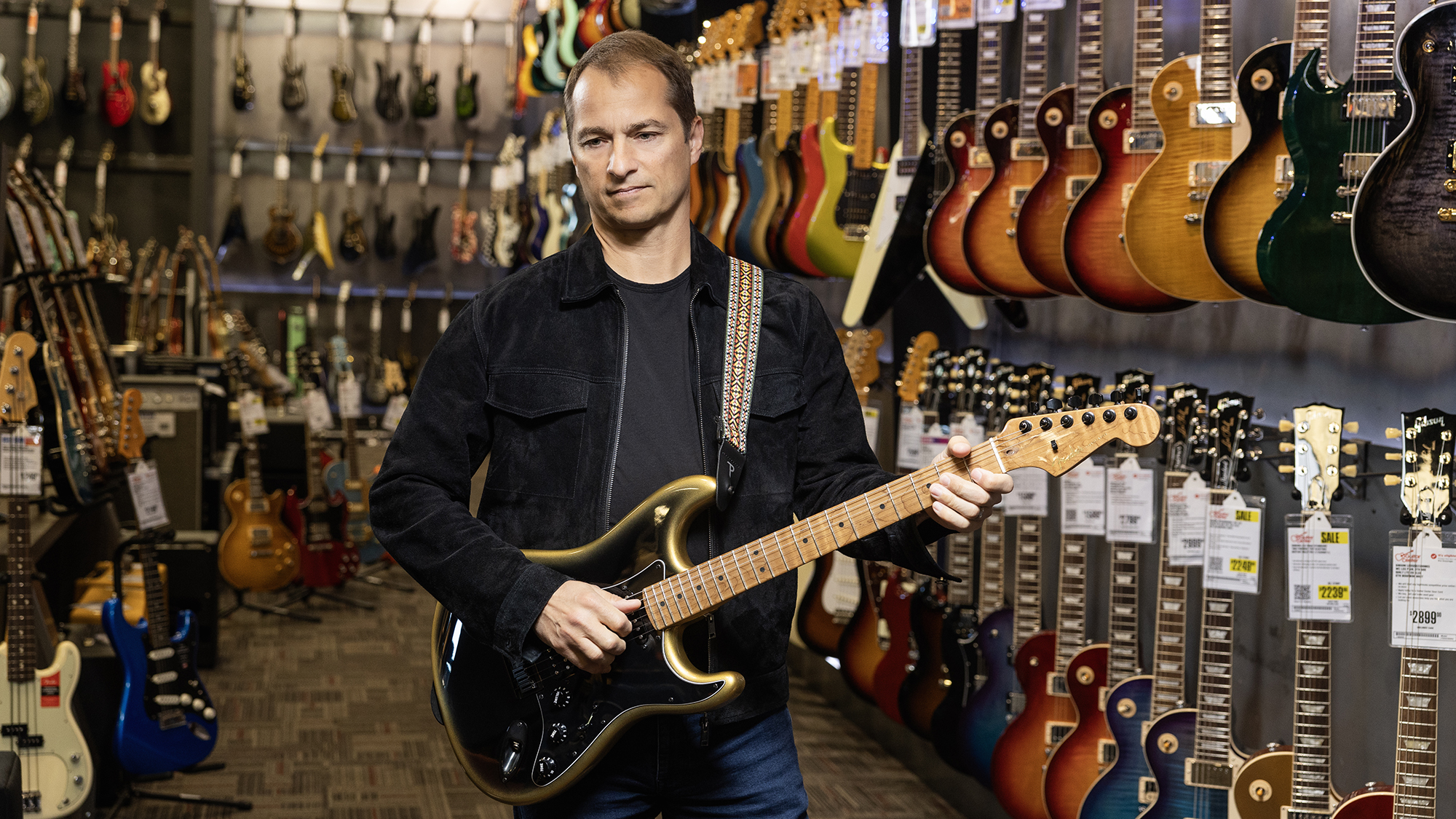Matt Heafy: “I knew me and Gerard Way doing a track together would break the elitist mindset of what black metal can be”
The Trivium frontman discusses his new signature Epiphone Les Paul Custom Origins series, explains how Ihsahn empowered him to subvert black metal, and teases yet more signature gear...
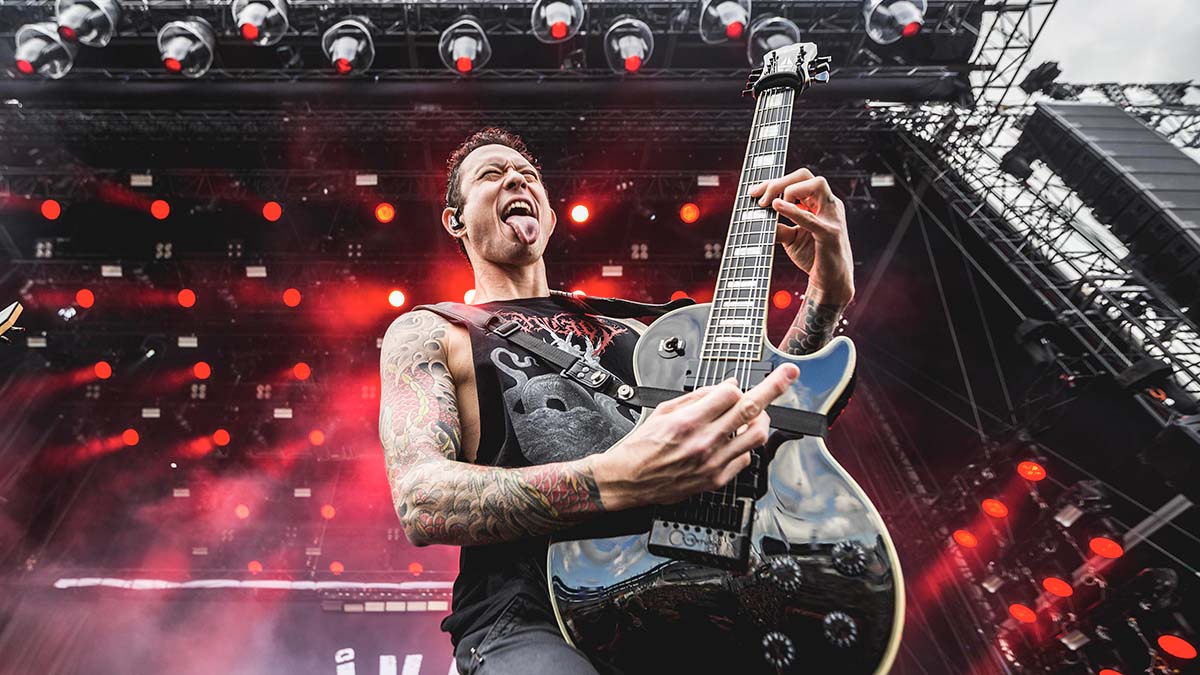
When Guitar World connects with Matt Heafy, it would be fair to say it’s a slightly different set-up to your typical interview.
Instead of a crackly phone line connecting two people many miles away from each other, we’re going out live on the Trivium singer/guitarist’s Twitch video channel, where hundreds of thousands of fans subscribe for their daily dose of the metal legend working behind the scenes, whether that be practicing and gaming at home or warming up and performing on tour.
As he’s explained in the past, it’s an incredibly forward-thinking way of interacting and engaging with fans, and also a strong income source for creative independence.
Today’s stream celebrates the launch of his Epiphone Les Paul Custom Origins series, which features six and seven-string models in Ebony and Bone White fitted with Heafy’s signature Fishman Fluence humbuckers, available in both left and right-handed versions.
Straight off the bat, he’s keen to stress that these are no budget models inspired by other higher-end guitars he secretly prefers – these are the actual instruments he chooses to swear by in the studio and on the road…
“For basically a thousand dollars, you can get the exact same guitar I play,” explains the Trivium leader. “The one I use comes from the same factory. There’s nothing special, nothing different, it’s straight off the line. I remember that feeling of being a kid in a music store and seeing your favorite guitarist’s signature model on the wall for $800, but then also seeing the $6000 model they actually played.
For basically a thousand dollars, you can get the exact same guitar I play. The one I use comes from the same factory. There’s nothing special, nothing different, it’s straight off the line
“It was a bit deflating for me, because the cheaper guitar was rarely actually used by the artist. I love the price point of the new Origins collection and the fact they’re all so affordable… but they had to be exactly what I use live and on the records. That goes back to the values I’ve always had, no-one is above anyone else in this world. There are these grander, existential feelings that I have about the various things I do.”
All the latest guitar news, interviews, lessons, reviews, deals and more, direct to your inbox!
Of which, we have to point out, there are many – at least when it comes to signature gear. The guitarist currently has his name attached to guitars, electric guitar pickups, pedals, guitar picks, fretwraps, straps and probably a whole lot more.
He jokes that while he does “feel a bit like a mini-Kiss at times” he only works with the best engineers and companies in the game. Given his success rate of these varying tonal endeavors, it’s hard not to believe him.
“A lot of people rip on my dual strap, but it’s actually been a lifesaver when my shoulder is a mess from jujutsu,” shrugs Heafy, before giving us a taste of what to expect next. “Recently I’ve been working with Jens Bogren on a digital amp suite, which is something people had been saying they wanted. If we’re doing it, we have to do it correct. I love Jens, he’s one of the greatest producers/mixers of all-time.
We’re not the biggest band in the world but we know our supporters better than most bands do
“We should have something together in about a year or so, aimed at people who don’t want to spend money on an amp head or pedal – those who prefer connecting their guitar to their computer. We’re not the biggest band in the world but we know our supporters better than most bands do. We listen to what they want and what they need.”
When was the exact moment you decided Les Paul Customs would end up being your main weapon of choice?
“Amazingly, this story goes back before I was born. Before my dad even had a son, he knew he wanted his son to play a Les Paul Custom, or at least some sort of Les Paul-shaped body. So it was predetermined genetically that I’d want to play a Les Paul.
“At 11 years old, before I got into metal, I tried out for a pop-punk band called Freshly Squeezed from Florida. I thought I was going to get the gig but didn’t get the call back and got super depressed, thinking I was done with guitar. I played a song by Blink-182 and thought I’d played it well but apparently not!
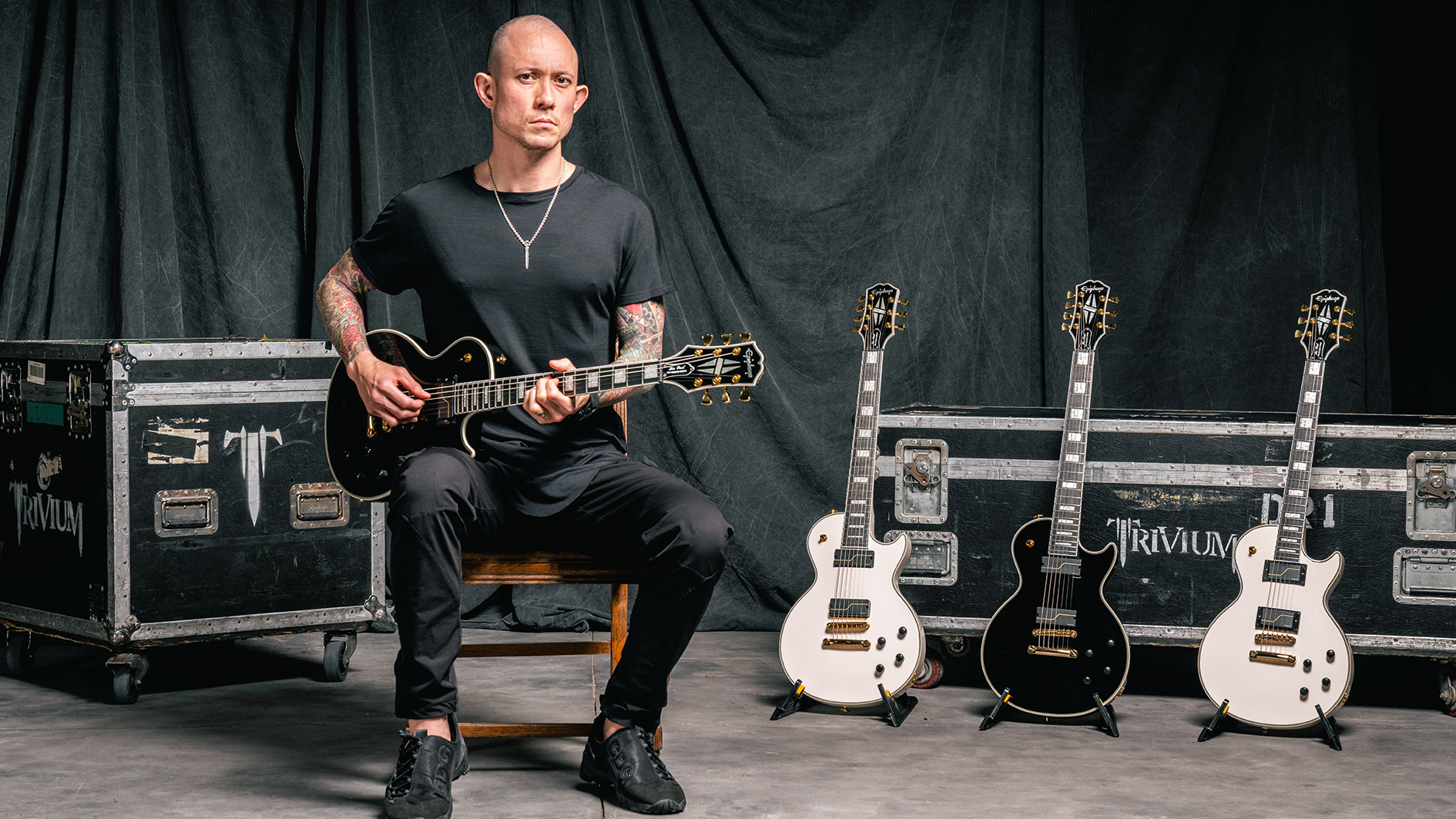
“I just had a starter guitar at that point, it was not a Gibson. I started getting into metal because of the Black album by Metallica. Someone had lent it to me and I took it into my room and realized that basically this was the music I was supposed to play.
“So I just started practicing all the time to emulate those sounds… unaware of the fact that I was practicing! I just wanted to play along until I could do it well.
“I didn’t realize that doing something like that was how you practiced in order to get good. So I started expressing that kind of musical interest. I played No Leaf Clover by Metallica at my eighth grade talent show and then got asked by the sister of the frontman of a local band called Trivium to try out for them.”
Well, you could say that one worked out okay in the end…
“I think they’d been around for two weeks and had never jammed at that point! It was funny they’d already lost their guitar player before even getting into the practice room.
“I remember showing up to [ex-drummer] Travis Smith’s house and he was the only kid I knew that smoked cigarettes and had a neck tattoo! I was only 13 years old and he would have been 16 or 17.
There was a while where I wanted my amp rig to be about as big as my phone
“They all looked at me as if to say ‘What’s this kid gonna be able to do?’ I played For Whom The Bell Tolls perfectly. Their look changed and they said ‘Alright, you’re in!’ I also played the high school battle of the bands. We opened with (sic) by Slipknot, then played For Whom The Bell Tolls, an early Trivium original called Thrust from one of the early demos and maybe Stinkfist by Tool. The rest was history!
“When I started expressing a true interest in being in a band, my Dad got me my first real guitar which was a Les Paul Custom. I was a very lucky 13 year-old because they are the pinnacle of good guitars. Luckily, my dad’s investment into his child was correct! I kept going and it’s the same guitar I sent to Epiphone in 2012 to start making the first signature happen.”
And you’ve used those Epiphones pretty much exclusively ever since…
“I told them to make it exactly like my one in terms of weight, sound and feel, or as close as they could through Epiphone. They sent me the first couple of prototypes and those guitars are actually what I used for the early tracking on the Ibaraki record, on the tracks Kagutsuchi and Ibaraki-Dōji.
It became the most successful Epiphone they’d made in the 135 years of Epiphone… which is pretty amazing
“I went on tour with them for a year, tooling around with them and figuring out what I liked and didn’t like, with extensive notes before we’d ever released anything. After a couple of revisions, we finally nailed the ones that have been out over the last few years.
“Initially they said ‘Let’s see how you do and we’ll make a 1000 for the next five years!’ And those all sold out in a couple of months so they kept going and going. It became the most successful Epiphone they’d made in the 135 years of Epiphone… which is pretty amazing.
“There were a couple of years off where there was no product, obviously, but that allowed us to tool what would become the Origins. It became the fastest-selling launch date Epiphone had ever had, which is pretty amazing.”
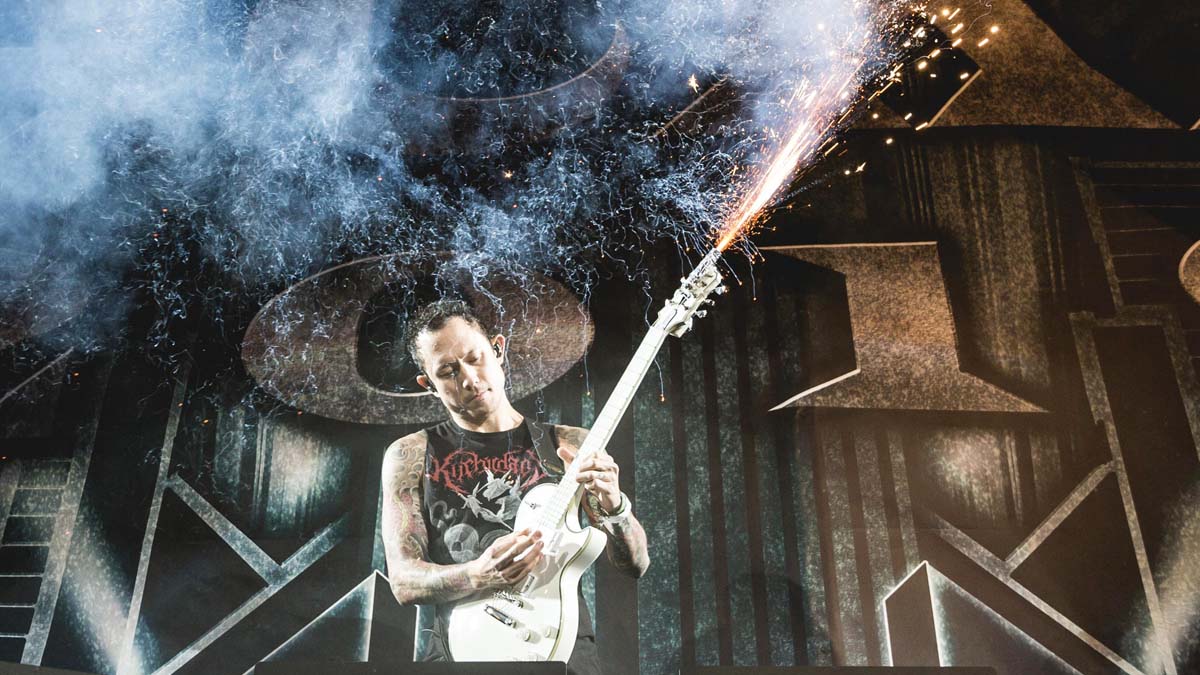
What do you look for in a Les Paul – say you’re in a guitar shop and trying out various Customs, which ones speak to you most and are they lighter in weight or brighter in tone, or perhaps vice-versa?
“If you’d asked me two weeks ago, I wouldn’t have known because it’s been a long time since I’ve been to a guitar store or tried a bunch that aren’t mine. But I recently went to lunch with Cesar Gueikian from Gibson, who took me back to his place and said we should try a bunch of guitars. And he has the most insane collection I’ve ever seen, all the 50s, 60s and 70s golden age Gibsons. He just has all of them.
“So we ended up trying 15 different 1958s, some of which there are only 4 in the world of or 15 in the world of. And these are all original 57s, 58s and 59s! It was truly ridiculous. I even tried a guitar that Adam Jones from Tool had fallen in love with and taken some inspiration from for his new models…
And which guitars ended up being your favorites?
“After trying a ton of stuff, I figured out that my favorite was this Goldtop that was supposed to be a burst. You can actually see the cracking of the burst below the Goldtop. It looks really weird, like a Goldtop that’s been crinkled like a candy wrapper or something! I believe that was a 58 or 59 – Cesar will kill me for not remembering [laughs] – and it crushed everything.
I used to love the super heavy guitars. Nowadays I needed something a little more ergonomic, maybe because I’m getting old and everything hurts
“We played it through one of his home rigs and got one of the sickest tones I’ve ever heard within minutes. I didn’t know if the amp he had would translate well for my kind of tone but it was absurd. That guy is a mastermind when it comes to knowing what gear is great, what guitars are great. Him and James ‘JC’ Curleigh have turned Gibson into the greatest company it’s ever been over the last three or four years.
“But what is it that I love? I used to love the super heavy guitars. When I made my original MKH Snofall, the black one, I wanted it to be heavy. I liked the idea of heavy feel and heavy tone at the time! Nowadays I needed something a little more ergonomic, maybe because I’m getting old and everything hurts [laughs]…”
You still have all those old guitars around, if you ever need them…
“Yeah, all of my old Customs are heavy and I still love them. I’ve got a VOS 57 Standard and a VOS 59 Goldtop, those are two of the best guitars in my collection and actually top all of the Customs! They just have that inexplicable thing.
“If a guitar makes me play great parts or write great riffs on the spot because the tone is great, then I love it. I used to overanalyze it a lot more, wondering whether it was something to do with weight, color or feel. Now if I pick it up and start playing like myself, I’ll know it’s the right guitar.”

So what’s the first riff or solo you play to test a guitar out?
“You’re supposed to play something you know inside out. But for me it’s also really important to play something new. If I’m in standard, I might play new stuff in the style of Ember to Inferno but not actual riffs from that record. It all goes back to what my practice ethic is.
“I like to make sure the right brain side is taken care of. All the mechanical preparations that go behind being a good guitar player are there first, like all the right hand stuff. So when it’s time to play, the left side of the brain can kick in and it’s all about creativity and improvisation. That’s what I like to do when trying out new guitars.
“If I’m in drop-D, I’ll play riffs that sound like Ascendancy riffs but aren’t necessarily Ascendancy riffs, just to see what might come out. I actually wrote a really cool riff on that original 50s Goldtop which will probably become a new song. That’s always the best sign. If I can write something brand new, something that I really love, and know that it will make the cut for Trivium… that’s a good sign!”
The new Origins models feature your signature Fishman Fluence pickups. How are they different to the Moderns you were initially using?
“When I find something I like enough to put my name on, like a signature item or custom shop thing, I always want it to work well whether you know Trivium, love Trivium or hate Trivium. Know me, love me or hate me, you will still want this instrument regardless of the fact it has my name on it or you might not even know who we are. Like my Les Paul Customs, it was all about subtle tweaks to the Fluence Moderns… because it really was a perfect pickup for me.
“The first thing I noticed was the zero latency when playing. There would be downpicked parts that need to be precise, clean and still aggressive. And I kept noticing I was going off-tempo.
Know me, love me or hate me, you will still want this instrument regardless of the fact it has my name on it or you might not even know who we are
“As soon as I switched to the Moderns, it felt dead-on. It’s like with software amps or plug-ins, and I do like some of them, but if you’re trying to play live in the moment you will notice some slight millisecond latency. The Fishmans feel very instant.
“That’s also why we went back to using real heads live, because we wanted our tones to be more instantaneous and rhythmic. The pickups were pretty much perfect so I kept the Modern voice pretty much unchanged. There’s also the Passive voice, and I also added in a third single-coil voice.
“We haven’t actually used that voicing much in Trivium or Ibaraki. I love to record with my Epiphones. Everything from Vengeance Falls to In the Court of the Dragon is all Epiphone, originally with the old pickups and I switched to Fishmans on What the Dead Men Say.”
Do you think you’ll be using the single-coil mode more in the future?
“I’ll definitely be doing that. It’s really trippy to be playing a Les Paul and make it sound like a Strat. It’s going to open up different ideas for me and whoever else ends up using them. It’s more and more tone, because you get three voices in the bridge, three in the neck and then different combinations in the middle.
“I found that even the subtlest changes in tone can help you come up with different riffs or create a different mood or venture off into new territories without even having to switch guitars. The versatility was a big thing for me, to make it have all these different colorful textures.”
The scale length for the new seven-string is also different to your previous signature…
“We’ve always been 24.75 for all my guitars, both sixes and sevens. It felt perfect and I didn’t want to mess with things too much. This time round, the six-string is the same at 24.75 with 22 frets. I’ve never really used 24-fret guitars. It’s just about what feels comfortable to me. If I need those extra two notes, I’ll just bend up.
There’s talk of some of MKH Kramer’s down the line as well. And then we’re even talking about doing Steinbergers a year from now
“But this time, the seven-string is now 25.5, which is the first time for a Les Paul in Gibson or Epiphone history. They’ve never made a Les Paul of that scale length. It really does sound beefier, you can hear the difference and it’s amazing. I’ve got some crazy scale lengths, there’s a Red Layer nine-string that’s one of a kind and it’s more like bass scale. It goes down to a low B flat, like a five-string bass!
“It all depends on what kind of guitar we’re making. There’s talk of some of MKH Kramer’s down the line as well, that I assume will be 25.5 for the six and higher for the seven! And then we’re even talking about doing Steinbergers a year from now… because why not when Gibson owns the company who started the headless guitar. I joked about a nine-string at one point but that’s probably very niche.”
Then, of course, there’s the Trivium KHDK pedals – last year’s Ascendancy overdrive and this year’s In Waves clean boost…
“There was a while where I wanted my amp rig to be about as big as my phone. I didn’t want any pedals or amps. Then one day, I think we were recording What the Dead Men Say, Corey told me to come play through some cab. I thought ‘Whatever, it’s just going to sound pretty much the same as the modeling stuff!’
Overdrive pedals are essential in modern metal. Having more gain on the head is just not the same, there’s something about two separate things working together that sounds better
“And it took me back to being 16, playing that Les Paul Custom at my parent’s house and feeling that true impulse response right there in the room. There’s this rhythmic staccato feeling that made me play more like myself. It made me think, ‘Okay, maybe I was wrong!’
“So then I started thinking about overdrive pedals, because they’re essential in modern metal. Having more gain on the head is just not the same, there’s something about two separate things working together that sounds better.”
You’ve told us in the past that it tends to be TS9s in front of your amps when recording. What other pedals did you take influence from?
“I’d collected all the different Ibanez Tube Screamers, plus other stuff by Maxon, Airis and random boutique companies. We started talking to David Karon from KHDK because we knew his stuff was truly amazing. I said ‘Here’s everything I love, here’s what we are looking for… what can we do?’ Because I can describe the things I love but I don’t necessarily know all the components and parts.
“We worked on a bunch of prototypes for a year or so for the Ascendancy drive and finally found the one that had everything I was looking for. We don’t tend to crank the gain in modern metal, as you will know – it tends to be gain at zero, tone in the middle and level just a little past the middle. The 333 pedals we made sold out in a day.

“When it came to the next one, I wanted to make sure it was another limited drop - another pedal we’ll never do again. Sure, the circuits and sounds may be similar, but the artwork and designs can’t be repeated. That’s when we decided to do a clean boost, which is something a lot of newer guitar players might overlook, even though overdrives can often be used more like a boost.
“I was able to find a few TC Electronic Integrated Preamps, which is good because apparently Fredrik Thordendal from Meshuggah had bought all of them on the planet and now owns them. But I got a couple, which needed strange power supplies but sounded freakin’ awesome.”
In what kinds of applications?
“They don’t seem to sound as well on modern heads for some odd reason, but if you put one in front of an old head like an original block letter 5150, it will sound amazing. Put the TC in front of a 5150 III and it won’t sound right, but an overdrive will… I don’t know why that is.
“So we made a small amount of clean boosts because we knew it was a bit more niche and sold them out. Not in a day this time, because the world had changed a lot in a couple of years. We decided to do another small batch, and when they’re done they’re done.
“The artwork is going to make a little monster man eventually, when you have all the different Trivium pedals together. It will be like this little figure, which will be cool for people to set up and use as an art piece.”
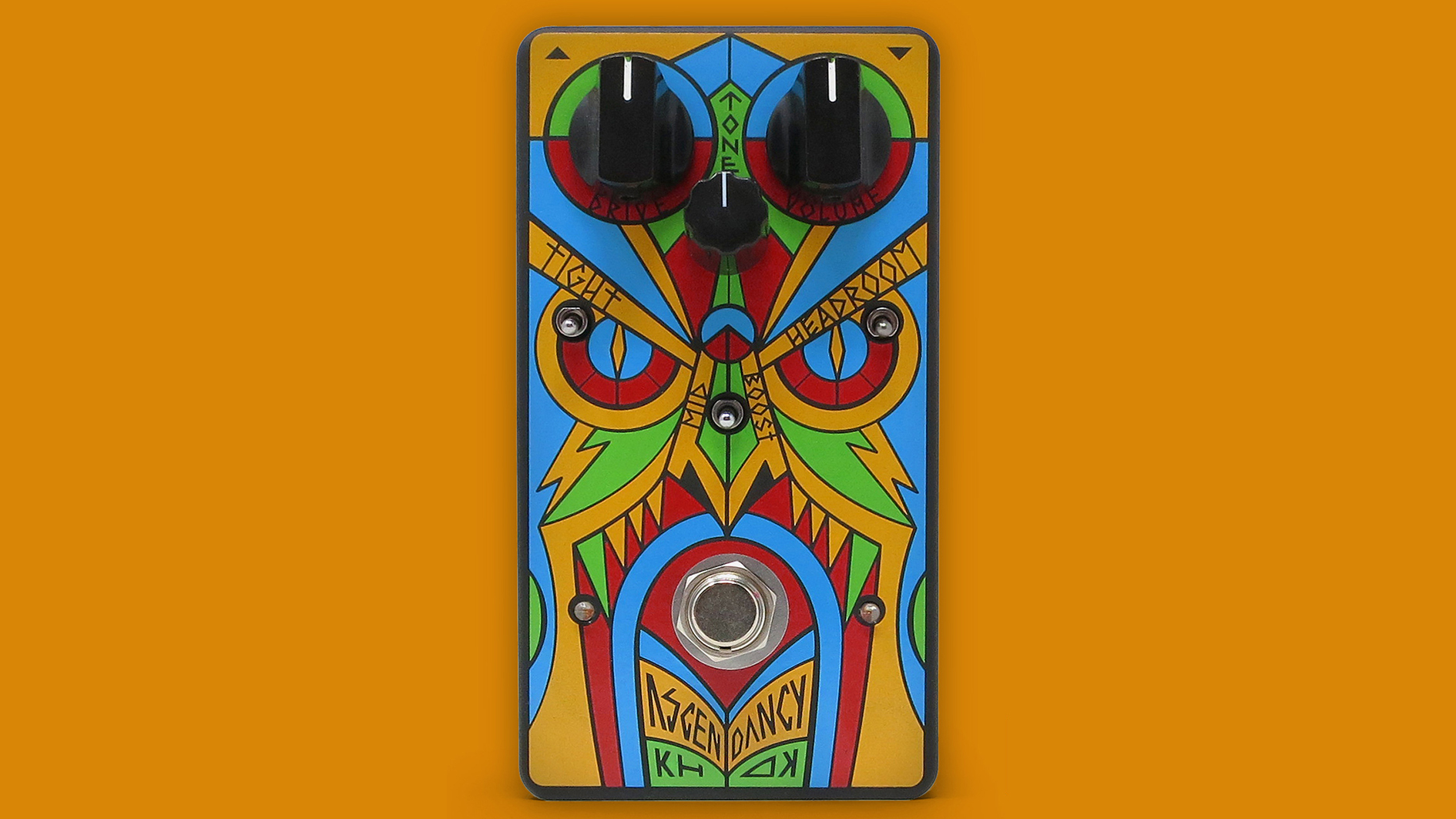
After a long period of writing and recording, you finally released the debut Ibaraki album a few months ago. Did it feel any different in terms of scales or techniques?
“What’s amazing is that in both Trivium and Ibaraki, there are no real confines. There are no rules on what it should or shouldn’t be, but at the same time all of us in Trivium know we’re not going to write a country song. We don’t even need to say it because we know it’s not in the band’s DNA.
Ibaraki took me 12 years to write and record... I wanted no boundaries whatsoever, in terms of techniques, keys or scales
“Ibaraki took me 12 years to write and record, like I mentioned some of those tracks were done as far back as 2010 or 2011. Rōnin and Susanoo No Mikoto were from 2017.
“Ihsahn felt that the attitude across those different years should be represented on the record so we never re-recorded any of those parts, which is pretty nuts. I wanted no boundaries whatsoever, in terms of techniques, keys or scales. Relearning it all has been a nightmare…”
From a technical standpoint?
“Trying to play and sing it is kinda impossible, because I wrote it all separately. If someone out there can sing and play Rōnin, I congratulate you, because it’s really freaking difficult. It’s in a strange time signature and in a strange key.
“On this album I kept tuning higher, which a lot of people tend not to do. Susanoo No Mikoto was capo’d on the seventh fret of a six-string. It turned the guitar into a strange thing, almost like a music box, which is not something you hear or see much in metal.
Susanoo No Mikoto was capo’d on the seventh fret of a six-string. It turned the guitar into a strange thing, almost like a music box, which is not something you hear or see much in metal
“Other stuff is in double drop tunings, it’s something I learned from Jason Suecof who I did that tech-death Capharnaum record with, plus some of the early Trivium stuff. The riffs end up sounding crazy because you don’t have to shift around much to find different scales.
“You could just play the seventh, eighth and eleventh frets on the bottom four strings and it will sound very musical, like you’re going up the fretboard when you’re not. It’s something I highly recommend because it’s so fun. Rōnin is capo’d on the fourth fret on a six-string in some weird time signature.”
Do you ever sit down and make note of the chords or time signatures in your music?
“I don’t actually know the chords or timing. I don’t go out seeking to write things that are odd or technical, but if it ends up that way, that’s great. A friend of mine tabbed out the Ibaraki record from all the DIs, coming up with all the chord names to see what was actually happening on this album. And it was all very strange stuff I could never have planned.
“This album was a blast to make but tough to relearn, especially when there’s parts with four different parts. Now me and Ihsahn are talking about where we can take it next.
“The two main directions are me singing in Japanese and writing old school-sounding songs or going with what the intro and outro teased, which is this intense, theatrical and elfen thing that’s Eastern European with occasional Japanese vibes. We could go in any of those directions and anywhere in between.”
You’ve worked with Ihsahn a lot in the past and share management with Behemoth. Gerard Way, however, is arguably a guest few would have expected on your black metal debut…
“I knew Gerard would blow people’s minds… it’s the concept of the guy from Trivium and the guy from My Chemical Romance doing a black metal track together. It would break the elitist mindset of what black metal can be.
“I loved the genre growing up, I’ve always talked about it, even though I was wearing an Emperor shirt that was much too small and wearing eyeliner. It didn’t make sense to some people, who felt I couldn’t look like that, be in a band that was commercially successful and still like black metal.
One day Gerard Way messaged me on Instagram asking if I could explain how to tremolo pick black metal riffs
“I’ve always loved living in spots where you aren’t supposed to mix things up, like in Trivium where we love satanic black metal and Christian metalcore at the same time! I love that hard balance and rebellion against itself.
“I met Gerard in 2006 at Big Day Out. We ended up talking about comics, Final Fantasy and food, as well as things like vocal range because The Black Parade had just come out and I wanted to pick his brain on the notes he was hitting. We stayed pen pals for years. Some years we chatted a lot, others we didn’t. One day he messaged me on Instagram asking if I could explain how to tremolo pick black metal riffs.”
And, naturally, you obliged…
“I said, ‘Of course!’ because it was something I felt I knew pretty well so I shot him something and sent it over just for him. When he thanked me, I took the opportunity to say I’d been working on this black metal record for about seven or eight years and asked if he’d be up for screaming on it.
“I’d never heard him scream but I just knew it would work. Just from talking, I knew he was into the genre. We’d discuss things we liked or disliked about the genre, and things we’d change if we could. That’s why this record has so many things that are philosophically un-black metal.
My hopes for this record is that I want it to bring an open-mindedness to everyone we share this planet with
“The goal of tapping into Japanese culture is not to just show it like the Norwegians did with their culture, but also help open people’s minds to other stories from Chinese or Korean traditions and beyond.
“My hopes for this record is that I want it to bring an open-mindedness to everyone we share this planet with… which is the exact opposite of black metal, where you are only allowed to listen to this, this and this from the most extreme style of music. I wanted to break those rules. I didn’t know I could break those rules until I befriended Ihsahn.”
Well, he is one of the most influential figures in extreme metal… what kind of advice did he give you?
“I was telling him about the things I thought I had to do and he told me, ‘No, that’s not what black metal’s about – it’s about breaking the rules and attitude!’ You don’t have to sound like this or that or burn down any churches… it’s about writing what you feel is right and making music from the soul. I learned so much from him, especially when it comes to this record. Gerard and I felt like outsiders looking into this genre, because Nergal and Ihsahn are like the torchbearers of the genre.
You don’t have to sound like this or that or burn down any churches… it’s about writing what you feel is right and making music from the soul
“And, actually, both of them have done things that are very un-black metal at times too, which I think is so cool. Like Nergal’s other band, Me And That Man. Or Ihsahn’s Eremita record, which changed the way I hear music just as much as Anthems To The Welken At Dusk because of its jazz chords, clean singing and saxophone solos. It had all these bizarre arrangements of timings and tunings that technically shouldn’t be in black metal.
“So that gave me the confidence to say to Gerard, ‘Hey, let’s do this thing!’ When we got his parts back, it was insane. Ihsahn, Nergal and I were all blown away. These are three people I’ve looked up to in my life who are all very well-read and eloquent. They aren’t trying to be anything but themselves.”
Amit has been writing for titles like Total Guitar, MusicRadar and Guitar World for over a decade and counts Richie Kotzen, Guthrie Govan and Jeff Beck among his primary influences as a guitar player. He's worked for magazines like Kerrang!, Metal Hammer, Classic Rock, Prog, Record Collector, Planet Rock, Rhythm and Bass Player, as well as newspapers like Metro and The Independent, interviewing everyone from Ozzy Osbourne and Lemmy to Slash and Jimmy Page, and once even traded solos with a member of Slayer on a track released internationally. As a session guitarist, he's played alongside members of Judas Priest and Uriah Heep in London ensemble Metalworks, as well as handled lead guitars for legends like Glen Matlock (Sex Pistols, The Faces) and Stu Hamm (Steve Vai, Joe Satriani, G3).

